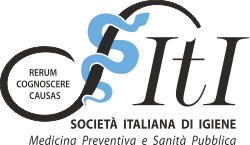The HPV vaccines, administered before exposure to the virus thus preventing precancerous genital lesions (of the cervix, the vulva and the vagina), considerably reduce the possibility of developing malignant neoplasia. Furthermore, the quadrivalent vaccine also prevents condylomatous lesions in both sexes.
The HPV vaccines, administered before exposure to the virus thus preventing precancerous genital lesions (of the cervix, the vulva and the vagina), considerably reduce the possibility of developing malignant neoplasia. Furthermore, the quadrivalent vaccine also prevents condylomatous lesions in both sexes.
Data on the prevalence of HPV infection in women show an initial infection peak at around 25 years of age which decreases with age and reoccurs with a second peak at around 45 years of age. HPV infection not only causes cervical cancer in women, but is also responsible for other diseases both in females and males (cancer of the anus, oral cavity, oropharynx and tonsils, and penile cancer).
There are over 130 types of HPV viruses: types 16 and 18 are responsible for over 70% of all cervical cancers and types 6 and 11 cause over 90% of anogenital warts, thus the vaccines are formulated to protect against these strains. By the end of 2010, 18 European Union countries had introduced HPV vaccination in the vaccination schedule.
The HPV vaccine is composed of the L1 proteins, i.e. viral-like particles associated with adjuvant substances, purified and produced using the recombinant DNA technique, therefore without using the genome (DNA) of the virus. Thus, the vaccine is unable cause HPV infection.
After the vaccine has been administered, the subject's immune system starts producing antibodies against these proteins and therefore in the event of a possible Papilloma virus attack, the body immediately recognises pathogenic cells and prevents the virus from causing damage.
In Italy, there are three different vaccines available against HPV infection:
- bivalent vaccine: contains serotypes 16 and 18 and is administered only to females
- tetravalent vaccine: in addition to serotypes 16 and 18, it also contains serotypes 6 and 11 and can be administered to males and females.
- nonavalent vaccine: contains serotypes 6, 11, 16, 18, 31, 33, 45, 52 and 58. It can be administered to both males and females.
The vaccine is preventive, has no therapeutic efficacy, and to be effective it must be administered prior to exposure to the virus type, preferably before the person becomes sexually active, although it has been shown to be effective even in females and males who are already sexually active. For this reason, prior sexual activity is not a contraindication to vaccination.
Vaccination does not replace routine cervical screening, so women still need to take regular Pap tests according to national screening rules (every three years in the 25-64 age group).
When to vaccinate
The HPV vaccine is administered intramuscularly in the deltoid region of the arm (or in the upper anterolateral area of the thigh for the tetravalent vaccine) in a number of different doses depending on the age of the individual and the vaccine used.
Bivalent vaccine:
- in subjects aged between 9 and 14 years inclusive: 2 doses (first dose at time zero and second dose 5 to 7 months after first dose);
- in subjects over the age of 14, 3 doses at 0, 1, 6 months respectively; the second dose should be administered 1 to 2.5 months after the first dose, the third dose 5 to 12 months after the first dose.
Quadrivalent vaccine:
- in individuals aged 9 to 13 years inclusive: 2 doses (the second dose 6 months after the first one). If the second dose is given less than 6 months after the first one, a third dose should always be administered. The quadrivalent vaccine can also be administered according to a 3-dose schedule (0, 2, 6 months): the second dose at least 1 month from the first dose and the third dose at least 3 months after the second one; the three doses must be administered within a period of 1 year;
- in individuals aged 14 years or older, three doses at 0, 2, 6 months respectively; the second dose at least 1 month from the first dose and the third dose at least 3 months after the second; the three doses must be administered within a period of 1 year.
Nonavalent vaccine:
- in individuals from 9 to 14 years of age inclusive: 2 doses. The second dose of vaccine is given between 5 and 13 months after the first dose. If the second dose is given less than 5 months after the first one, a third dose should always be given. The nonavalent vaccine can also be administered according to a 3-dose schedule (0,2,6 months): the second dose should be administered at least 1 month after the first dose and the third one should be administered at least 3 months after the second. All three doses must be administered within a period of 1 year.
- in individuals aged 15 years or older at the time of the first administration: 3 doses (0,2,6 months). The second dose should be administered at least 1 month after the first one and the third dose should be administered at least 3 months after the second. All three doses should be administered within a period of 1 year.
The immunological protection of the vaccine, according to recent studies, exceeds 8 years and therefore there is currently no evidence of the need for a booster dose. Studies are underway that will gradually give us ever more reliable information on the duration of protection.
As previously mentioned, HPV infection is easily acquired and for this reason it is important to administer the vaccine before the individual becomes sexually active, even though previous sexual activity is not a contraindication to vaccination.
Currently in Italy the vaccine is recommended for all girls during the 12th year of life (it can be administered from 9 years onwards), up to 45 years, and in June 2012 the vaccination coverage for girls born between 1997 and 1999 was around 70%.
In males the vaccine has been shown to be effective in preventing 90% of genital warts caused by the types of HPV contained in the vaccine; in the United States the tetravalent vaccine is also recommended in males during the 12th year (from 9 years on) and up to 21 years. This vaccine can be given to men between 22 and 26 years of age who have not completed the 3-dose series. It is also recommended for some at-risk groups who are already aged 26 or older, such as homosexuals or immunocompromised subjects (due to HIV infection or other diseases, or to taking certain classes of drugs). Worldwide, Australia and Canada also recommend universal vaccination for both sexes at the twelfth year of life.
Furthermore, the HPV vaccine can be given at the same time as other vaccines.
Who should not be vaccinated
Anyone who has had a major allergic reaction to any component of the HPV vaccine or to a previous dose of HPV vaccine should not receive HPV vaccination.
Furthermore, it is of prime importance to inform the doctor if the patient has a yeast allergy (since the viral-like particles produced for the preparation of the tetravalent vaccine are produced by yeast cells) and/or an allergy to latex (as the piston cap of the bivalent vaccine is made from latex rubber).
There is insufficient data available to allow recommendation of this vaccine during pregnancy and therefore vaccination must be postponed until the end of the pregnancy (although having received the HPV vaccine in pregnancy is not a reason for interruption). Moreover, it is possible to be vaccinated with the tetravalent vaccine during the period of breastfeeding, while the bivalent one should be used only when the possible advantages exceed the possible risks. The use of hormonal contraceptives does not appear to have influenced the immune response and therefore the efficacy of either vaccine.
When to postpone vaccination
Patients with mild illnesses (such as minor upper respiratory tract infections or mild fever) can usually be safely vaccinated. If, on the other hand, they have moderate or severe illnesses (such as severe acute febrile illness), it is advisable to delay vaccination until they have recovered.
Side effects of vaccination
The HPV vaccine has been used safely all over the world for several years; data derived from randomised clinical trials show that the most frequent events associated with vaccination are only local reactions at the injection site, while the risk of the vaccine causing serious damage is extremely modest. Of course, as with any other drug or vaccine, it is possible that vaccination can cause serious damage, such as a severe allergic reaction, although this is usually very rare.
As regards local reactions to the vaccine (pain, redness, swelling and itching) these are very common (up to 80% of cases) but are generally mild/moderate and in any case transient, thus resolving spontaneously within a few days.
Other adverse events following vaccination include fever (more than 0.1% of cases for tetravalent and between 0.01 and 0.1% of cases for bivalent), urticaria (between 0.01 and 0, 1% of cases for bivalent and between 0.0001 and 0.001% of cases for tetravalent). For the bivalent vaccine alone, side effects may include headache (more than 0.1% of cases), nausea, vomiting, diarrhoea or abdominal pain (between 0.01 and 0.1% of cases), muscle or joint pain (approximately 0.1% of cases).
Furthermore, as after any medical procedure, syncope is possible (a short fainting spell and related symptoms such as dizziness); for this reason it is necessary to sit or lie down for about 15 minutes after vaccination, in order to help prevent fainting and injuries caused by falls.
As with all other vaccines, the HPV vaccine will continue to be monitored over time, and any problems, including unusual or serious ones, will be reported.
Sources / Bibliography
- http://www.epicentro.iss.it/problemi/hpv/epid.asp#mondo
- http://www.who.int/immunization/topics/hpv/en/
- http://www.ieo.it/Italiano/ServiziPazienti/Documents/Materiale%20Info-educativo/Booklets/101_Il%20tumore%20della%20cervice%20uterina%20(CSE.DO.1087.A).pdf
- J Lugarini, F Maddalo, Results of a vaccination campaign against human papillomavirus in the province of La Spezia, Liguria, Italy, March-December 2008, Eurosurveillance, Volume 14, Issue 39, 01 October 2009
- F Dorleans , C Giambi, L Dematte, S Cotter, P Stefanoff, J Mereckiene, D O'Flanagan, P L Lopalco, F D'Ancona, D Lévy-Bruhl, on behalf of the VENICE 2 project gatekeepers group7, , The current state of introduction of human papillomavirus vaccination into national immunisation schedules in Europe: first results of the VENICE2 2010 survey, Eurosurveillance, Volume 15, Issue 47, 25 November 2010
- http://www.epicentro.iss.it/problemi/hpv/pdf/Aggiornamento_HPV_30062012_validato.pdf
- http://www.epicentro.iss.it/problemi/hpv/epid.asp#mondo
- Ministero della Salute: Aggiornamento della schedula vaccinale anti-papillomavirus e delle modalità di rilevazione delle coperture vaccinali



